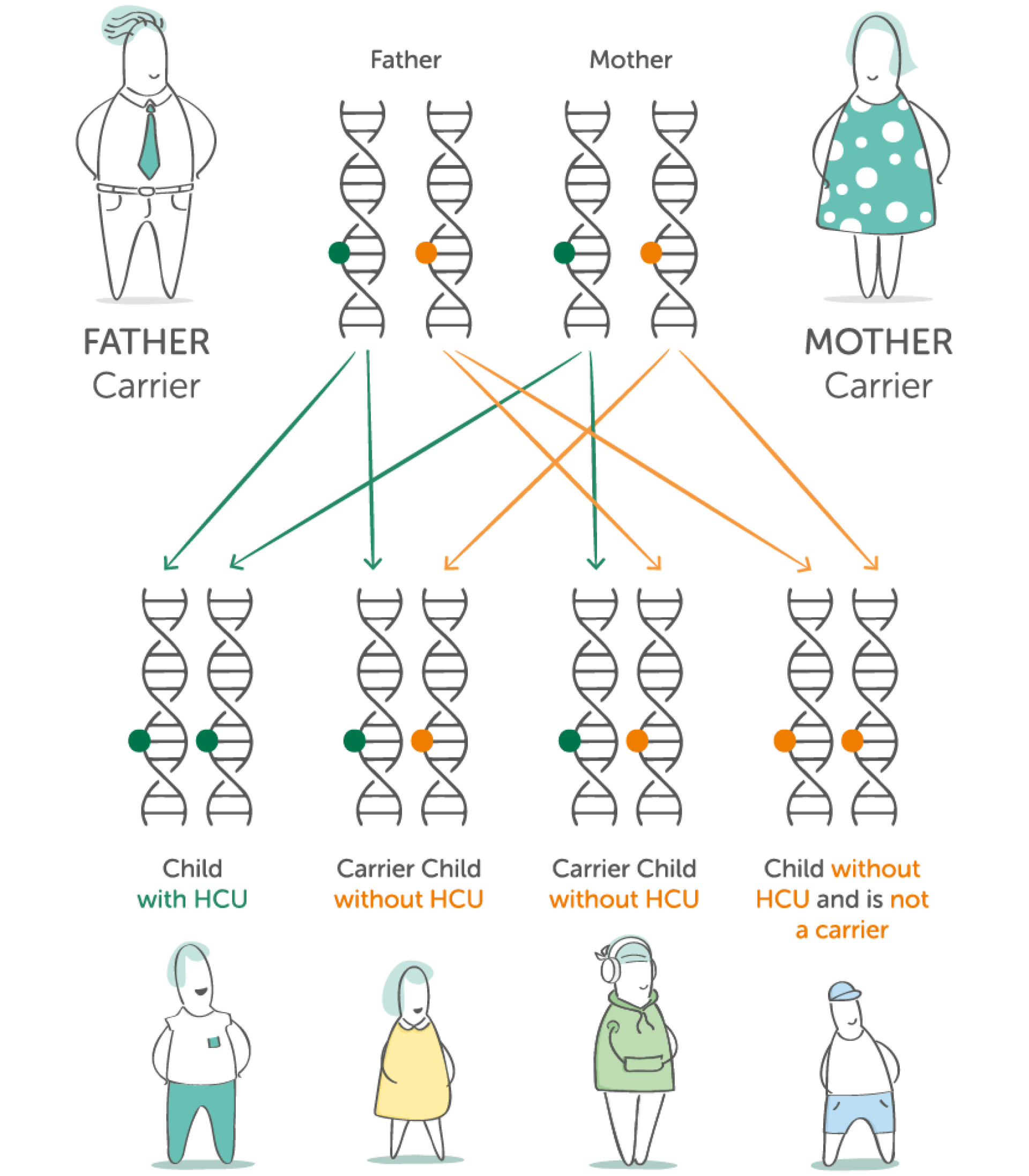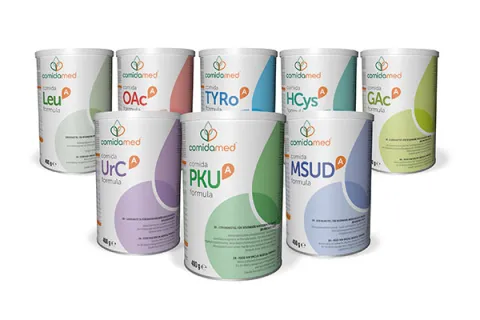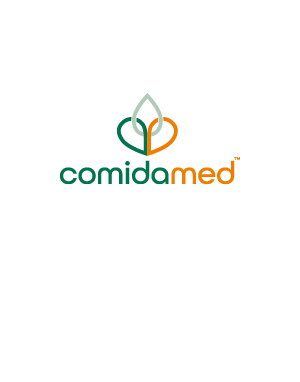An introduction to Homocystinuria (HCU)
This easy to read page guides you through the diagnosis and management of HCU.
This is an introduction to HCU following a positive newborn screening for your child.
This guide is for information only and should not be a substitute for informed medical advice.
Consult your metabolic team for diagnosis and treatment for HCU.
If you are unclear about anything written in this booklet, please ask your dietitian for further information.
This booklet was written with Allyson Terry, Paediatric Dietitian - Metabolic. Alder Hey Children’s Hospital,
Liverpool
What is HCU?
Homocystinuria or HCU for short (sounds like Homo-cyst-in-u-re-ah).
This can also sometimes be known as cystathionine beta-synthase (CBS) deficiency.
Children with HCU have a defect in the process which breaks down part of a protein called methionine.
Diagnosis of HCU
This blood test (heel prick test) is carried out by a healthcare professional after birth.
Once diagnosed the child will be referred to a specialist metabolic centre to ensure they receive the care they need.
There are two main forms of HCU
‘Pyridoxine responsive HCU’ can be treated with large doses of Vitamin B6 (pyridoxine).
It is the milder form of HCU.
‘Pyridoxine non-responsive HCU’ does not respond to large doses of vitamin B6.
Initially all patients newly diagnosed with HCU are given a trial of pyridoxine treatment to establish whether they are responsive or not.
Your child has been diagnosed with pyridoxine non-responsive HCU.
This is managed by following a strict lifelong special low protein diet alongside medication.
If left untreated, substances in the blood build up to toxic levels and cause problems to several parts of the body which include:
Brain
Developmental delay and behavioural problems.
Eyes
Short sightedness, dislocation of the lens of the eye and glaucoma.
Blood vessels
Blood clots and risk of strokes.
Skeleton
Tall stature with long arms and legs and increased risk of broken bones.
In newborns diagnosed with HCU, early treatment can prevent many of these symptoms from occurring and with life long management your child can reach their full potential.
Why does my child have HCU?
HCU is an inherited genetic condition
It’s nobody’s fault and there is nothing you could have done to prevent it.
As a parent of a child with HCU, you have one HCU gene and one non-HCU gene. This is known as being a carrier.
Your child has inherited 2 HCU genes, one from the father and one from the mother and so therefore will have HCU.
There are a small number of people who are carriers of the HCU gene
People who are carriers for HCU do not have HCU themselves and the HCU gene does not cause a problem to them.
When 2 people who are carriers of the HCU gene conceive a child there is a 1 in 4 chance of that child having HCU.

The science bit... Protein explained
Why do we need protein?
Protein is one of the nutrients needed by the body.
It helps to build, repair and maintain body cells and tissues, like your skin, muscles, organs, blood and even bones.
Protein is made up of different building blocks called amino acids.
When it is eaten it is broken down into these amino acids so they can be absorbed into the blood stream and travel to where they are needed.
The conversion of protein into amino acids
Enzymes are special proteins which are like chemical scissors needed for the breakdown of protein into amino acids. There are 20 amino acids (building blocks) that make up protein.
Protein
Enzymes
Amino acids (Building Blocks)
Methionine is one of these amino acids and is used by the body to make new substances, some is broken down further to form another amino acid called homocysteine.
Methionine
Enzymes
Homocysteine
It is homocysteine that a person with HCU cannot process correctly.
Why can someone with HCU not process homocysteine correctly?
A person without HCU
Methionine
Enzymes
Homocysteine
CBS Enzymes
Cysteine and other substances
In a person without HCU, some of the methionine is broken down further to make a new amino acid called homocysteine.
Normally the liver produces an enzyme called cystathionine beta-synthase (CBS) which helps homocysteine break down to cysteine.
A person with HCU
Methionine levels rise
Enzymes
Homocysteine levels rise
Faulty/No CBS Enzyme
Low levels of Cysteine
In HCU the CBS enzyme is either not made by the liver or it does not work properly. This causes methionine and homocysteine to rise and cysteine levels to be low in the blood.
High levels of homocysteine are toxic in the blood and this results in damage to tissues in the body, such as the brain, eyes, blood vessels and skeleton.
The severity of HCU varies and depends on whether the faulty CBS enzyme is completely inactive or can still break down some homocysteine.
Management of HCU…
A Typical Diet
A typical diet has too much protein/methionine for a person with HCU.
Therefore, they must follow a special low protein diet for life.
The HCU Diet
- HCU is managed by following a strict low protein/low methionine diet.
- If the amount of methionine in the diet is reduced, the amount of homocysteine produced by the body is also reduced. This is because homocysteine can only be made in the body from methionine.
- Methionine is found in all protein containing foods and therefore must be restricted.
- All amino acids including methionine have a role or function in the body.
- It is therefore important that someone with HCU gets some methionine to support normal growth, but not so much that it becomes harmful.
- Extra vitamins or other medications may be prescribed, your doctor/dietitian will advise.
Traffic Light System
The low protein diet a person with HCU must follow is best described by using the traffic light system:
Red: Stop!
- Too high in protein/methionine
- Do not eat these foods.
Amber: Go Cautiously!
- Contains some protein/methionine
Green: Go!
- Exchange-free foods - low in / free from protein / methionine
- These foods can be eaten without being measured.
Red: Stop!
Do not eat the following foods:
- Meat
- Fish
- Eggs
- Cheese
- Chicken
- Quorn
- Nuts
- Soya
- Pulses
- Bread
- Biscuits
- Chocolate
These foods are all rich in protein and therefore high in methionine,
so they are not allowed.
Amber: Go Cautiously!
Foods like cereals, fries, sweetcorn, peas and rice contain a small amount of protein. They can be eaten in measured amounts which are known as exchanges.
Your child requires a small amount of methionine for growth, development and repair.
Your child will have a set number of exchanges allowed per day. Your dietitian will advise you how many and teach you how to calculate exchanges.
These foods are spread out between the day’s meals. The quantities allowed will vary from person to person and from time to time in the same person.
* 1g protein is approximately 20mg methionine.
Green: Go!
Most fruit and vegetables such as, peppers, grapes, carrots and tomatoes can be eaten freely.
There are also special manufactured foods which are low protein:
- bread
- flour
- milk alternative
- chocolate flavoured bars
- pasta
- cereal
These foods are either naturally low in protein and therefore methionine or have been specially manufactured to be low in protein (these foods are available on prescription) and so are exchange-free and do not have to be measured**.
These foods should make up the majority of your child’s diet.
They provide a source of energy and variety in the diet.
** Please note certain specially manufactured low protein foods will need to be counted as part of methionine exchanges. Please check with your dietitian.
What is a protein substitute?
Why does a person with HCU need to take a protein substitute?
Due to the restrictive nature of the diet, individuals are unable to get all the nutrients required by food alone. This is why a protein substitute*** is essential.
A protein substitute is a specially made medical food. It contains NO added methionine, but it contains all the other amino acids in protein that your child needs to grow and develop.
Most protein substitutes also contain vitamins, minerals and other important nutrients to ensure your child is getting what they need.
The protein substitute helps to keep the methionine, homocysteine and cysteine levels within an acceptable range throughout the day.
It is an extremely important part of the diet for a person with HCU.
It must be taken regularly and evenly spread over the day.
The protein substitute needs to be taken for life.
*** Protein substitutes designed for the dietary management of HCU are Foods for Special Medical Purposes which must be used under medical supervision.
There are many different protein substitutes which are designed to fit easily into everyday life and offer choice so that you find the right product to suit your child.
Your dietitian will advise you on which protein substitute is best for your child at each stage of their development.
How will I feed my newborn?
Infants diagnosed with HCU will have high methionine and homocysteine levels initially. To reduce these high levels:
Infants: breastfeeding
Step 1
Your infant will be given a special methionine-free formula instead of breastfeeds until the levels of methionine fall back to normal levels (usually within a few days).
Step 2
Once the levels of methionine and homocysteine are under control, a measured amount of the methionine-free formula is given before a breastfeed.
This is to restrict the amount of methionine taken by the infant from the breast milk.
Breast milk provides limited but essential methionine for normal growth. You will be advised by the dietitian on how much methionine-free formula and breast milk to give.
Keeping a record of your infant’s intake may be useful.
Breastfeeding offers many benefits for infant and mother, it is recommended you discuss this with your healthcare professional.
Infants: non-breastfeeding (Bottle feeding)
Step 1
Your infant will be given a special methionine-free formula instead of standard infant formula until the levels of methionine fall back to normal levels (usually within a few days).
Step 2
Once the levels of methionine and homocysteine are under control, a small restricted amount of standard infant formula will be given plus the methionine-free formula.
The measured amount of standard infant formula will provide the limited methionine essential for normal growth and development. You will be advised by the dietitian on how much methionine-free formula and standard infant formula to give.
Do not mix the methionine-free formula and measured amount of standard infant formula together. Give them in 2 separate bottles.
Keeping a record of your infant’s intake may be useful.
Introducing complementary feeding and the second stage protein substitute to your infant
When to start complementary feeding✢
Complementary feeding is often referred to as weaning. It is the process of gradually introducing solid foods into your infant’s diet. Your dietitian will advise you when to start solid foods, but it will occur around the same time as infants without HCU.
First foods introduced will initially be exchange-free foods.
This will help your infant to develop a healthy eating pattern while eating a variety of foods.
Your infant needs to continue to take their methionine-free formula and breast milk/standard infant formula as advised by their dietitian.
This is also the time that a second stage protein substitute may be introduced, your dietitian will advise you about this this.
✢ Weaning may occur a little earlier than 6 months, depending on your infant, but it should never be started before 17 weeks.
7 to 12 months
Once your infant is accepting some exchange-free foods, foods containing measured amounts of methionine (exchanges) are introduced.
Over time, they will get more of their exchanges from food (e.g. potato or cereal) and replace the protein they were getting from breast milk or standard infant formula.
Exchange-free foods should still be included in the diet as well.
Your child will also be encouraged to move to more textured food and finger foods to encourage self-feeding. Your infant will also begin to drink from a beaker.
Your dietitian will provide more detail about introducing complementary feeding and introducing the second stage protein substitute. Your dietitian will continue to advise you on your methionine free formula/protein substitute intake.
Monitoring
Your child will have regular blood tests and monitoring to make sure their methionine, homocysteine and cysteine levels are under control.
This is very important to ensure that they do not have too little or too much methionine in their diet.
The results of these blood levels are used to adjust the diet and medications as required.
Your dietitian will contact you once the results are processed and discuss any changes that may be needed to your child’s diet.
Illness
As with all infants and children illness will occur from time to time.
Contact your GP if your child is unwell to get advice on treatment and let them know your child has HCU.
Give any medications recommended by your doctor.
Maintaining your infant’s fluid intake during illness is important and extra fluid may be necessary, particularly if your infant has vomiting or diarrhoea.
It is important that your child continues to take their protein substitute during illness to help maintain metabolic control. Speak to your dietitian for advice.
If your infant has to have any planned surgery contact your metabolic team for additional advice.
As your child grows up
Children / Teenagers / Adults
Your child will continue to follow a low protein (low methionine) diet as they grow up into adulthood.
You, your child and dietitian will help choose the protein substitute that best suits them and their lifestyle.
Consistent good metabolic control throughout life ensures the best chance of a healthy life. HCU should not restrict your child or your family from everyday activities, for example going on holiday, eating out or playing sport.
If you are going on a long haul flight contact your metabolic team for additional advice.
Download to share offline
You can download and print a colourful version of this pages as a PDF which you can share with friends and family.
Browse other topics
Discover more from the comidamed world:



